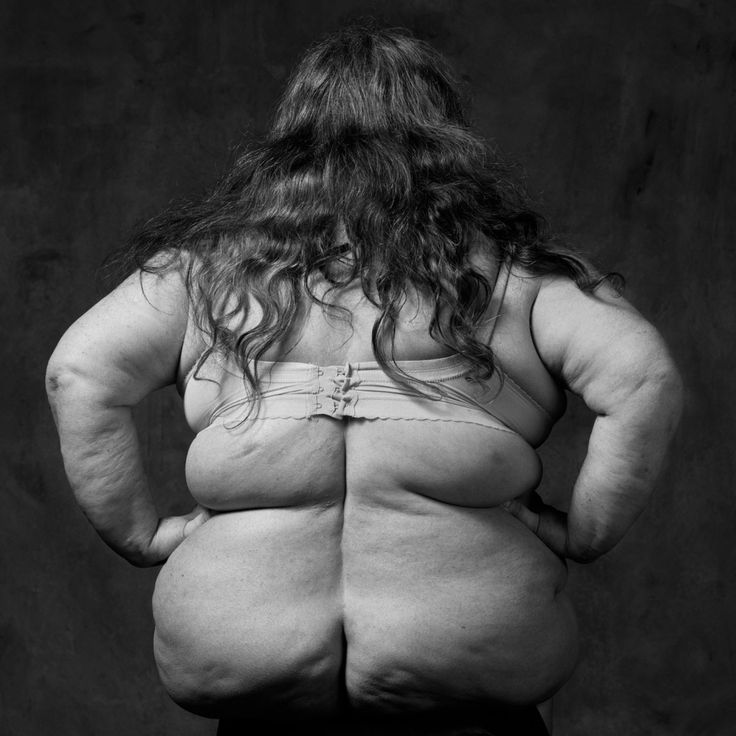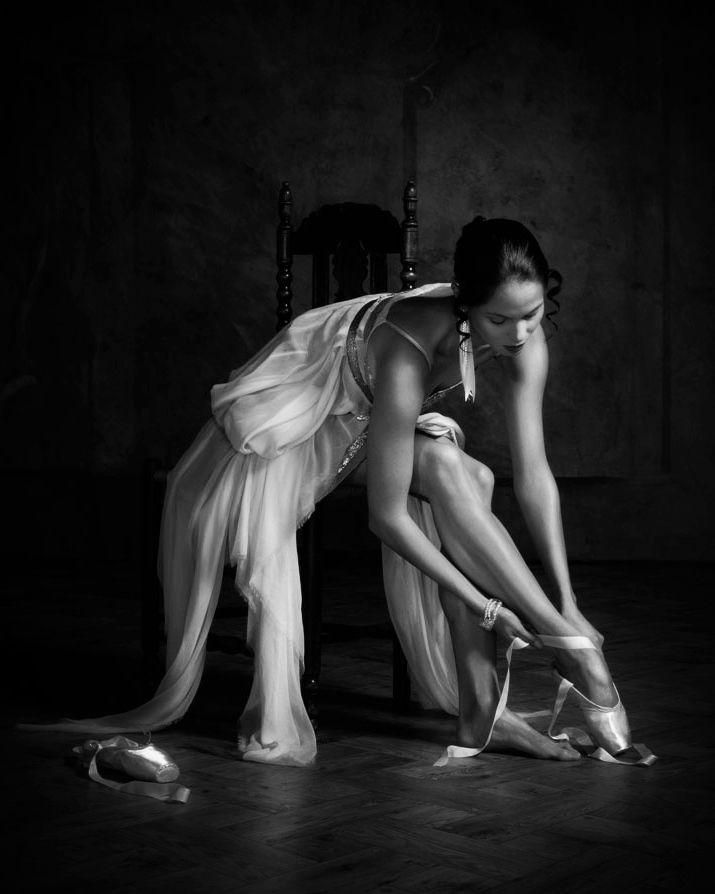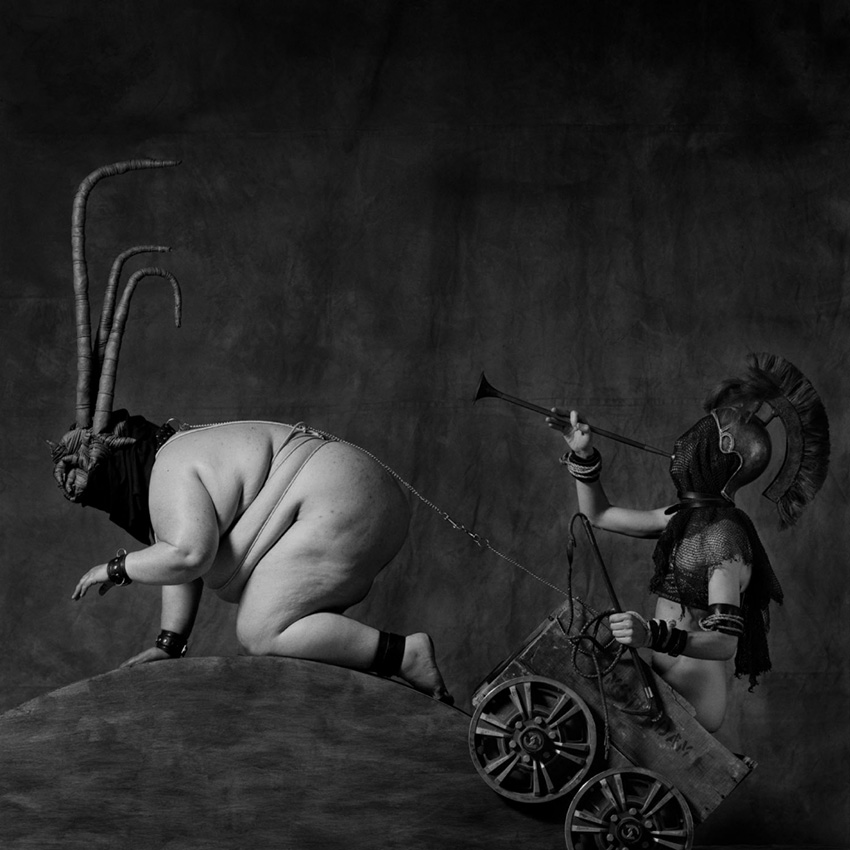Ken Weingart interviews Erwin Olaf
Photographer and writer Ken Weingart has been producing interviews for his Art and Photography blog, and he has kindly offered to share a few with the Lenscratch audience over the next few months. Today, Ken interviews Erwin Olaf, one of the top advertising and portrait photographers in the world for over twenty-five years. Erwin just closed the show Waiting: Selections from Erwin Olaf: Volume I & II exhibited at the Hasted Kraeutler Gallery in New York. While continuing to do innovative commercial work, he has increasingly become focused on his personal work.
Erwin Olaf was born in 1959 in Hilversum, the Netherlands and lives in Amsterdam. Mixing photojournalism with studio photography, Olaf emerged on the international art scene in 1988, when his series Chessmen was awarded the first prize in the Young European Photographer competition. This award was followed by an exhibition at the Ludwig Museum in Cologne, Germany in the same year. He has continued to exhibit his fine art work and push the boundaries of his commercial practice.
In 1987, he began working with film, which has since then continued to be an important medium for his art. Often these movies provide a parallel history to his colour photography. In the past years, Olaf’s films have been screened at several leading museums and film festivals all around the world. A selection of screenings at museums as Centre Pompidou – Paris, Reina Sofia National Museum – Madrid, SCCA, Centre for Contemporary Art – Ljubljana, and the Museum at FIT – New York City. A selection of screenings at film festivals: Fashion Film Festival – Melbourne, Rencontres International Film Festival – Paris, International Film Festival Turkey – Ankara, EMAF Festival – Osnabrück, Dutch International Film Festival -Rotterdam.
How did you get started in photography?
I started out doing School for Journalism in Utrecht, the Netherlands. One of the courses had some photography in it, and after doing some photography, one of my teachers really encouraged me to continue with it, and I fell in love with it.
In your fine art work, what are you trying to say, or achieve?
In my personal work I want people think about the subtext of the photograph. I create a highly stylized look in photography, which draws in the viewer… and once they are ‘lured’ in by the ‘beauty’, I hope they then get the second message or concept as to what exactly is different for each series.
How do you come up with your ideas?
Usually just by sitting on my couch a lot, and looking out of the window. I love my house. But seriously, I get ideas from everywhere, traveling and staying in anonymous hotels (Hotel series, 2010) to my relationship with my Mother (Separation, 2003), or growing older (Mature, 1998). Inspiration can come from anywhere.
What are the commissions you enjoy the most? What types of clients do prefer to work with?
I enjoy commissions that are demanding, that trigger me to do something new and combine with a little of what I already know. I like intelligent, trusting clients, who come to me because they trust me do something with them that exceeds our expectations. I am not fond of clients who just want me to do my ‘trick’.
Do you find editorial more interesting and gratifying than advertising, and, what is more important, commercial work or fine art/ personal work?
My personal work is the most important to me right now. There was a time when the commercial work allowed me the freedom to do my personal work, but now the personal work does that in itself, which is great. I like commercial work, as long as it is challenging and inspiring. Editorial is not really more interesting than advertising, it’s just a different field. It is also exciting, but totally different, with a different agenda.
How would you describe your lighting? Some might call it painterly; how did you learn and evolve into this type of lighting?
By visualizing and taking the proper time to light someone or something. You use your eyes and learn by trial and error. It’s called painterly because I used one light when I started out, and painters usually have only one main light.
What cameras and lights are you using — do you prefer film or digital? Are you using any special digital filters for post processing?
I use a Hasselblad with a digital back (phase 1). I don’t have a preference, but digital has made life easier. Right now, I’m in the process of turning digital files into negatives so I can print my own silver gelatins again. Nothing beats a beautiful well-printed silver gelatin.
Hotel 2010 has a certain sexuality implied. How would you describe your connection to the images?
I have been to a lot of hotel rooms, and they were always a little depressing and sexual at the same time, and that is what I was trying to catch with my series. I think the sexuality has something to do with the anonymity of a hotel room, or the fact that they usually have good beds.
Self Portraits is very edgy, and also has a lot of sexuality in the images. Were they all photographed on the actual dates listed, and what is the overall objective, or it there one?
I have done many self-portraits because I think it’s an important photographic document of my state of mind. That’s the overall objective — to catch my mindset and development at the moment. In my 20’s it was very sexual, in my 50’s, I am occupied by my health issues.
Who are your favorite photographers and influences past or present?
I like filmmakers of the 70’s (Pasolini, Visconti), and photographers like Helmut Newton and Mapplethorpe. The list is very diverse and changes every now and then.
In Hope and Rain series, many of the subjects are standing very rigid and upright. Does this tie into the theme of hope and rain, and what do you mean by hope and rain?
Hope and rain are metaphors. The people are standing rigidly because they have just received really bad news (at least that what I imagined). With Rain, the news was just delivered, with Hope it sets in, and the consequences become clear.
Your backdrops are very interesting and moody. Do you create sets with a set builder? Does this become expensive to create?
I work a lot with the same team (among them the set designer Floris Vos). We create a mood together, and he sets off to work with his team. Yes, it is very expensive.
How would you describe the way your art and career have been evolving since you started and are you surprised by it?
I am very happy with the way it has been evolving, always changing, slowly moving in the right direction, always exciting, and as I always say… Never a dull moment. Right now, I am extremely happy that I can focus mainly on my personal work, and continue to delve into that. Also, the recognition one receives from all the galleries and museums around the world is gratifying.
What are your favorite series and works to date, and what kind of ideas do you think you will be pursuing in the next few years?
In the next few years I would like to go back to the darkroom and do my own printing again — start working a little smaller, more intimate. I don’t have a favorite series. I have favorite pieces from each series.
Your film works, are they mostly personal works or assignments? Are you hoping to direct feature films?
I am going to direct a feature film, a book adaptation from a Dutch writer, Arthur Japin. My recent film works have been mostly personal, or part of installations (like the Keyhole, or Waiting).
Would you say there is a main theme, style, or point of view in your works that tie together both the print and the film?
There is no big main theme. For the installations, they are obviously different perspectives or narratives of the same subject.
How do you like living in Amsterdam? What are the best and worst things about it?
I love living in Amsterdam. The best things are the canals, it’s small, we have many birds, my beautiful apartment. The worst thing: maybe it’s a little crowded, especially in the smaller old streets, and parking your car in Amsterdam is not ideal.
How do like your time the U.S.? What is most different about the U.S. for you?
People are always polite in the U.S. I love my time in the U.S. It’s a great, unlimited, very diverse country. But also you have a very tough society; its very dog eat dog. That is something I don’t miss so much at home.
Posts on Lenscratch may not be reproduced without the permission of the Lenscratch staff and the photographer.
Recommended
-
Tara Sellios: Ask Now the BeastsApril 6th, 2024
-
ALEXIS MARTINO: The Collapsing Panorama April 4th, 2024
-
Emilio Rojas: On Gloria Anzaldúa’s Borderlands: The New MestizaMarch 30th, 2024
-
Artists of Türkiye: Eren SulamaciMarch 27th, 2024
-
Love and Loss in the Cosmos: Valeria Sestua In Conversation with Vicente IsaíasMarch 19th, 2024


































































































